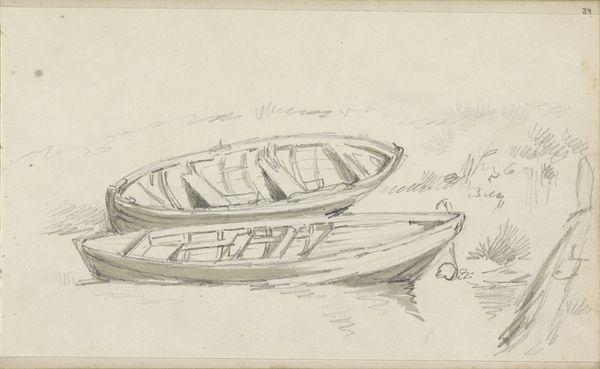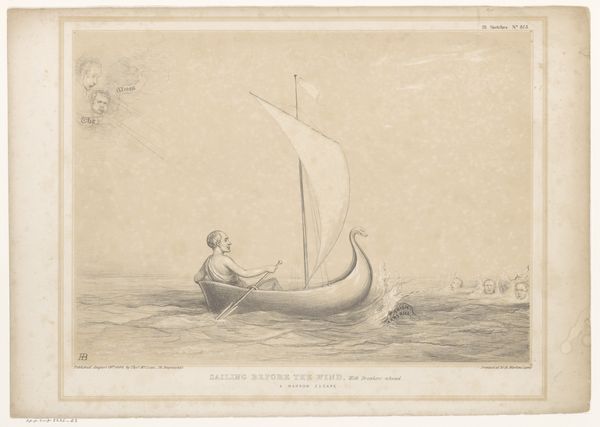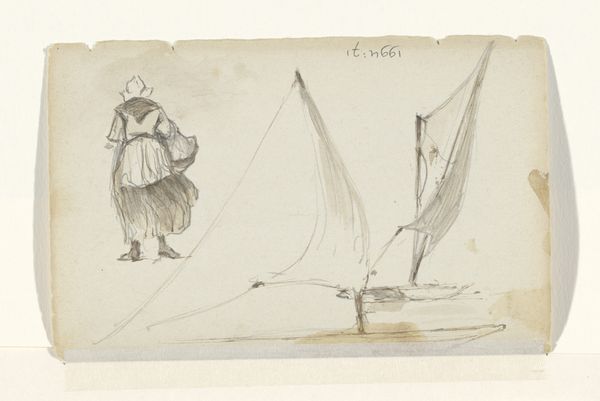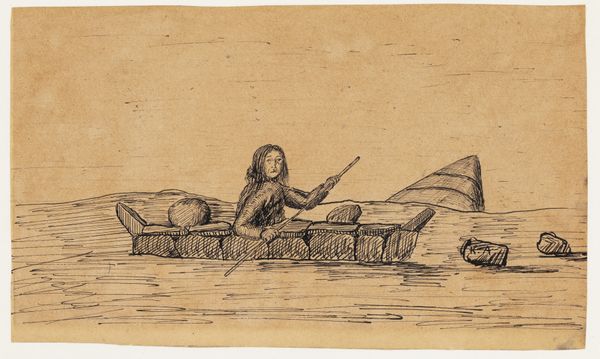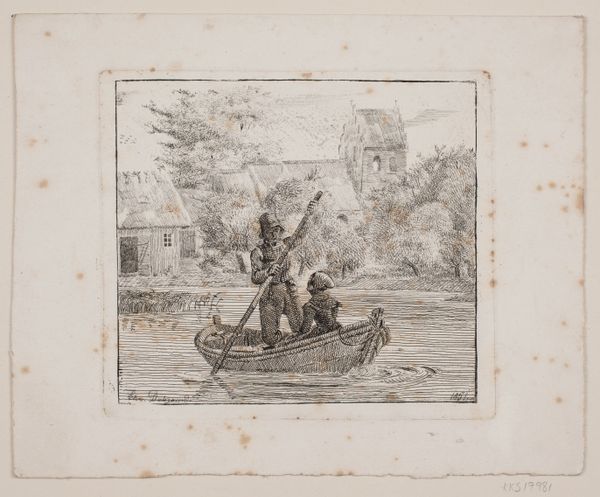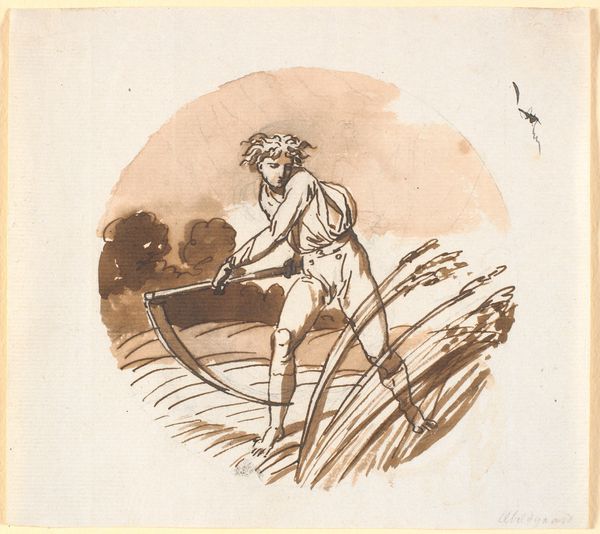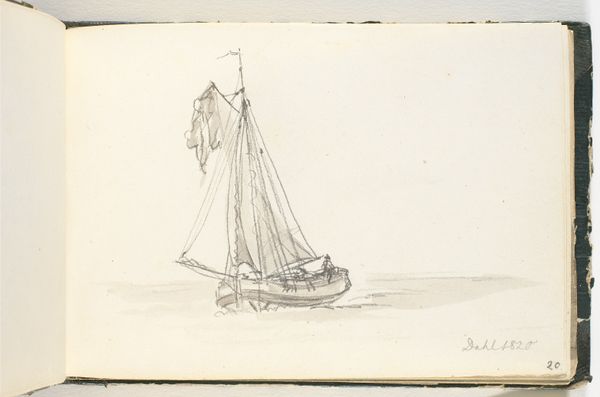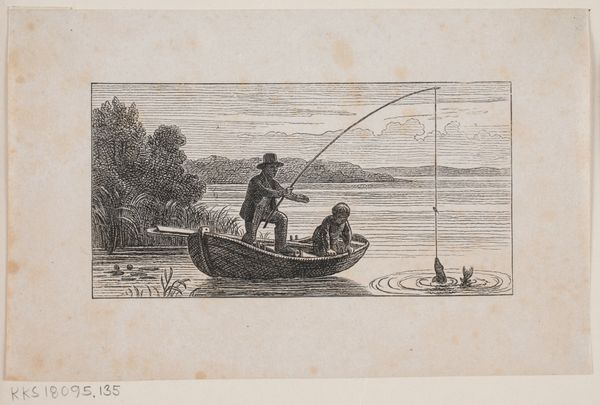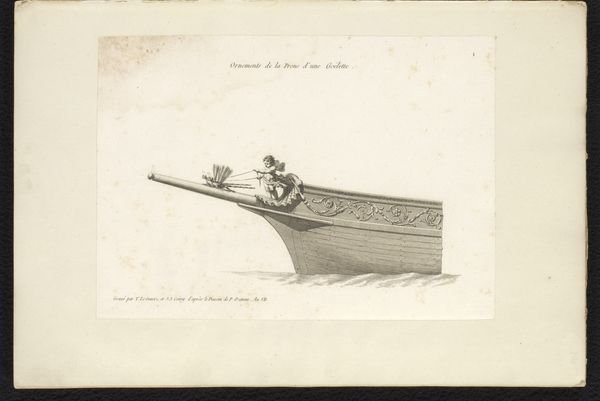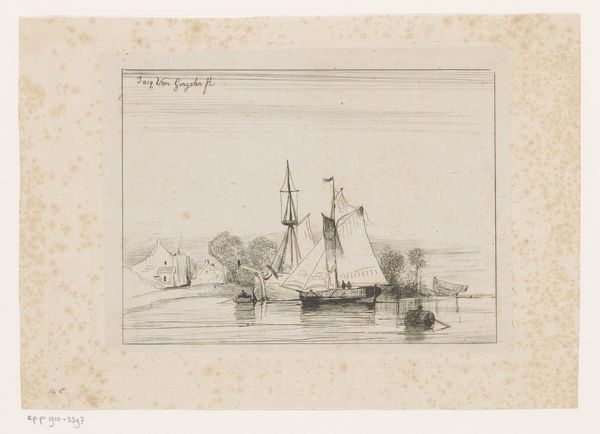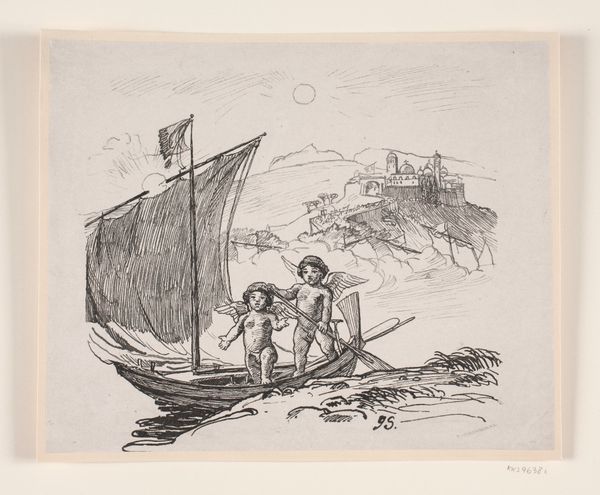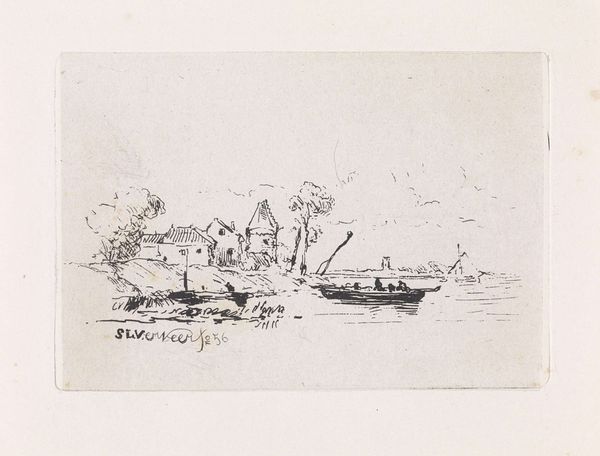
Illustration til "Snedronningen" i H.C. Andersen, "Eventyr og Historier", Bind 1 1870 - 1873
0:00
0:00
Dimensions: 77 mm (height) x 137 mm (width) (bladmaal)
Curator: This is an illustration by H.P. Hansen, made between 1870 and 1873, for Hans Christian Andersen’s “The Snow Queen.” It’s an ink drawing on paper, a print, currently held here at the SMK. What’s your initial take? Editor: Serene, almost melancholic. There's this delicate figure adrift in a boat, but it's the sheer simplicity of the lines, the visible labor in each stroke, that truly captures my attention. The stark ink work emphasizes a narrative around both vulnerability and artisanal dedication. Curator: Indeed. Hansen was working during a period where Andersen’s fairy tales were being readily adapted and visually interpreted. This illustration offers us insight into how Romantic ideals were being disseminated to a wider public through popular literature. Editor: Right, and I think focusing on process here reveals more. Consider the choices in the materials; ink on paper allows for easy, inexpensive reproduction. This image would have reached numerous homes, shaping perceptions and even dictating aesthetic choices beyond gallery walls. Were these illustrations highly circulated at the time, becoming almost "domesticated" art? Curator: Precisely. They became culturally significant commodities. It highlights the narrative’s impact but also speaks volumes about the growing print culture of the era, democratizing art in unprecedented ways. This print gave visual form to widely read narratives. Editor: And notice how the hand crafted aspects still resonate. It pushes back against mass production because you sense his choices in rendering. The figure has emotional intensity and it connects back to how Hansen chose his mark-making process. There's also an economy of means in capturing form in that period through affordable labor—how that makes narrative possible in popular life. Curator: I agree. Hansen’s artistic decisions allowed “The Snow Queen” to become embedded in the public consciousness, shaping societal values and understandings through easily distributed imagery. He managed to make Andersen's narrative accessible by utilizing materials that could reproduce it. Editor: And thinking materially about the visual languages we come to connect to stories, and how we imbue things like boats, journeys and isolated subjects, and give emotional texture through such humble and powerful methods is why studying it like this is so resonant to me. Curator: Well, it’s always worthwhile to reexamine art’s role beyond aesthetic appreciation, recognizing its involvement in broader social and historical dynamics.
Comments
No comments
Be the first to comment and join the conversation on the ultimate creative platform.
